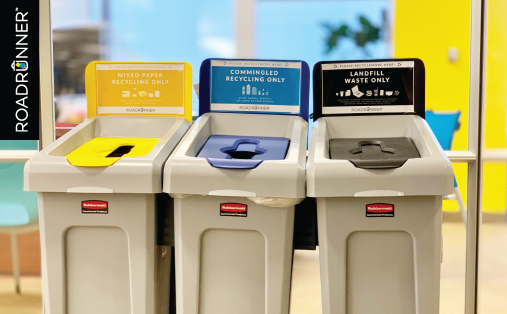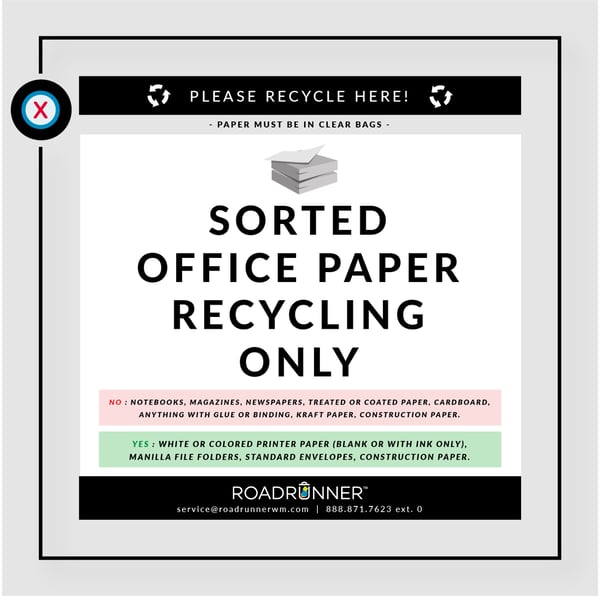It is often challenging for businesses to generate buy-in and broad participation in recycling initiatives within their facilities. There are many ways to reinforce the process and educate your employees, but without a doubt, the best place to start in order to make significant positive improvements is by incorporating signage on your waste & recycling receptacles. In this post, we share why signage is so important for businesses large and small, and the best practices for incorporating waste & recycling signage at your business.
Why Signage is so important
A single piece of contaminated material can send an entire batch of recyclables to landfills. Contamination is an issue that significantly reduces the value of recyclable materials and renders them non-recyclable. The largest issue with contamination surrounds people's confusion about how to recycle and what to recycle. Unclear signage on bins, or a lack of signage altogether, is a main driver of the confusion. The most effective way to minimize confusion, and thereby reduce contamination, is to incorporate waste and recycling signage on the receptacles at your business. As soon as someone walks up to your containers, appropriately marked signage eliminates the guesswork and ensures people have clearly understand what to recycle, what to compost, and what to send to landfill.
Waste and Recycling Signage Best Practices
Before creating your signage, it's very important you have a clear understanding of the waste and recycling materials your business generates. This will ensure your signage will educate and guide your employees for any scenario they run into. Below are the signage best practices that we use in our own facilities and recommend to our customers.
Label Each Container
Clearly labeled bins eliminate the guesswork and ensure employees have the appropriate guidance to discard waste materials into the proper receptacles. We highly recommend labeling each unique container (commingled recycling, mixed paper, compost, landfill, etc.) throughout your facility.
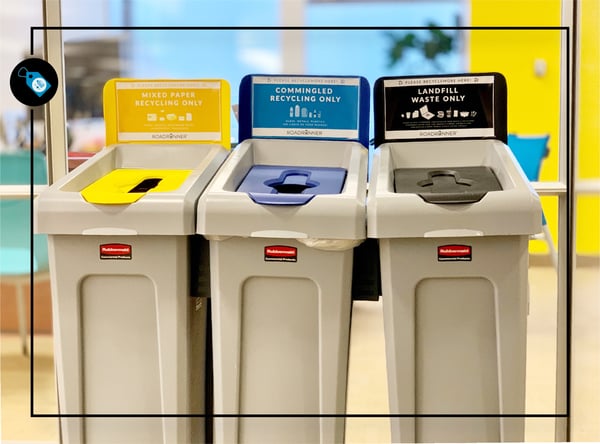
color-code recycling streams
Assign a color to each waste stream type that you have a receptacle for. This will help improve recycling participation by creating familiarity and further solidifying which bin to use for recyclables, landfill waste, organic waste, etc. After assigning colors to each stream, ensure your signage matches the corresponding color. Colors for each waste stream vary from business to business, but these are the most common colors that RoadRunner and our customers use:
Yellow: Mixed-Paper Products
Orange: Cardboard Waste
Blue: Commingled Recyclables
Green: Compost / Organics
Black: Landfill
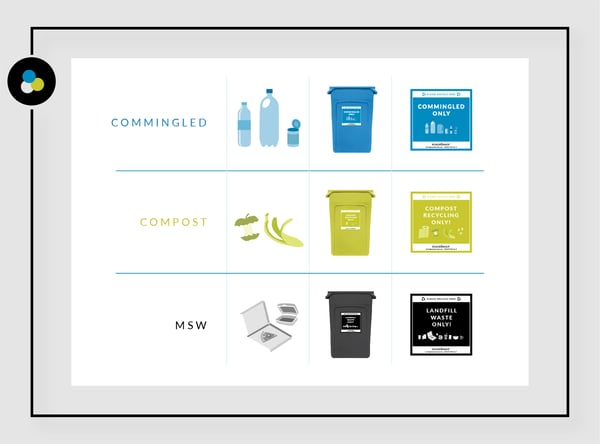
Ensure THE SIGNAGE is VISIBLE
Presenting your colleagues with eye-level messaging on the "how-to's" of recycling will help reinforce the proper management of materials. Ensure visibility by posting large, easy to read, signage on or above each container. The most popular sticker placements include the front of the container, the backboard, or next to the openings. If possible, post additional signage on walls above the receptacles.
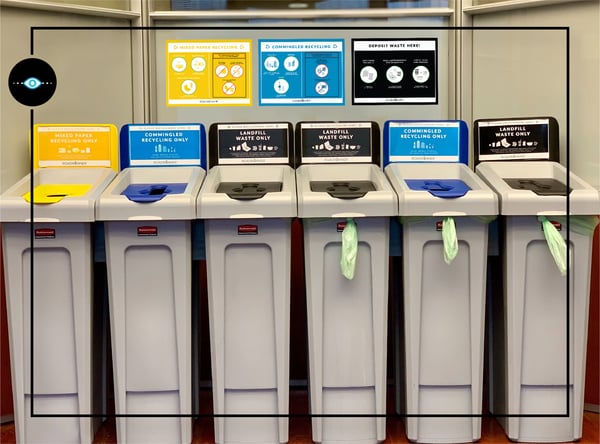
Include Examples
Include examples of commonly used items for each stream to help encourage correct separation of materials. Sometimes, office workers have trouble remembering which materials belong in which container, but seeing a list of accepted materials can clear up any confusion and guide them. In the example below, we include compostable items directly on the signage.
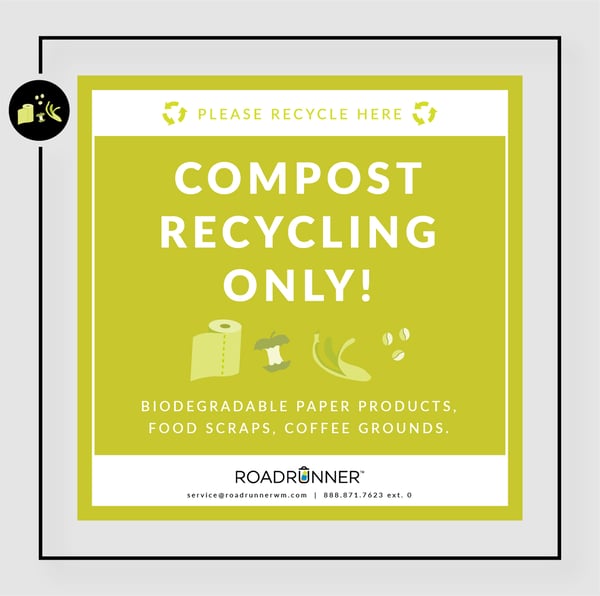
Use Images
You can also include images or graphics of commonly materials generated at your facility. Using specific imagery makes it easier for people to identify the appropriate receptacle to use.
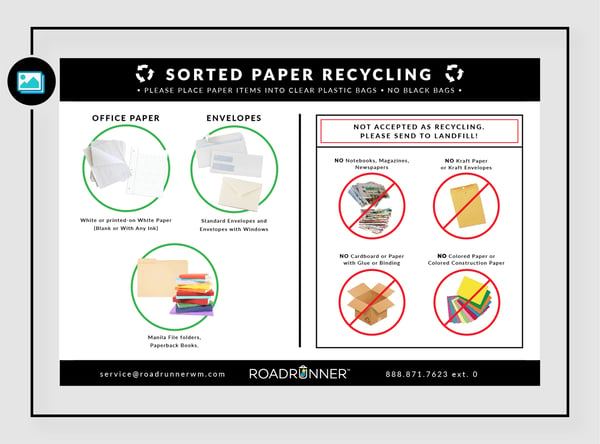
List the "not recyclable" Items
Listing the "Not Recyclable" items can be just as helpful as listing the recyclable materials, and a great way to mitigate common contaminants from being tossed in the wrong container. We're talking about you, Styrofoam, plastic bags, used napkins, and paper towels. Position the “don’ts” at the bottom of your signage and stickers.
Consistency
Do your best to ensure the color, image, size, messaging, and text is consistent at each collection point inside your facility. For example, if you use a green container for organics, then make sure to use green containers and signage for organics throughout your entire facility. Using varying colors, images, messaging, or text throughout your office or facility can create confusion and negatively impact the benefits of incorporating signage.
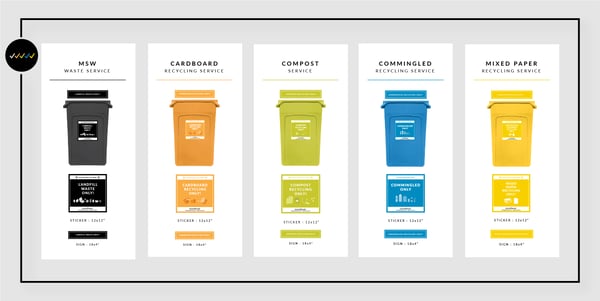
create multi-language signage as needed
We often find that language barriers lead to contamination. Make sure to address this by including intuitive graphics or imagery in your signage and stickers. As much as possible, translate your signage into each language used by your employees to further support participation in your waste and recycling program.
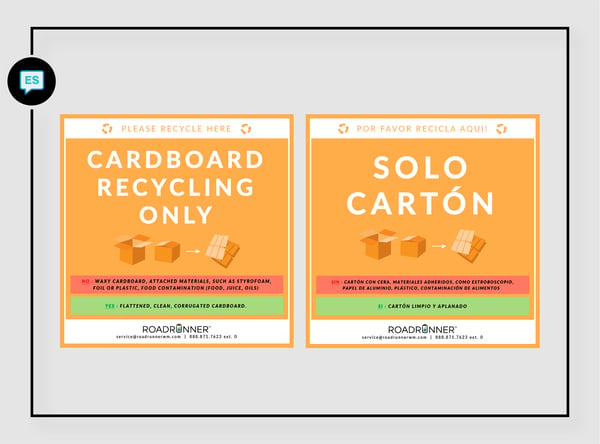
Get Started
Now that you understand the best practices for waste and recycling signage, it's time to get started at your own facility! Let us know if found this resource helpful in the comments section below, and of course, feel free to get in touch if you have any questions! Thanks for reading.
